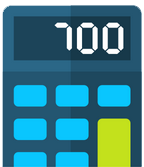Tax Relief On Tools Guide
Do you buy the tools that you need for work? Then you are likely to qualify for tax relief on that cost – regardless of what industry you work in.
Claiming back tax relief on your tools is a great way to pay less tax and can mean you are entitled to a tax rebate from previous years.
It’s down to you to claim your money back so it’s important to start your claim as soon as you can.
Our free ‘Tools Tax Relief Guide’ explains exactly what can be included in your claim and the process for reclaiming tax relief on your tools.
Which tools are eligible for tax relief?
The basic eligibility criteria are:
- Your purchases of equipment and tools are necessary to complete your work.
- You buy these tools at your own expense.
- Your employer does not pay you back for this outlay.
- You have paperwork evidence to support your claim (e.g. receipts).
What percentage of the overall cost can I expect to get back?
You can normally claim tools tax relief worth 18% of your tool purchases. A claim can be made for the previous four tax years. If you’ve still got receipts for tools bought before then, these can be added to your claim.
You can use our tool tax back calculator to get an estimation of what you may be owed back.
Tool tax relief time limit
There is no time limit if you are claiming back capital allowances. But the tool needs to still be in use and a receipt has to be provided for each tool.
You need a good understanding of the capital allowance rulings before you claim to ensure it is accurate and you are not claiming too much or too little. You can use our capital allowances guide to learn more.
I don’t have receipts. Can I still claim?
If you don’t have receipts, you can still claim a tool allowance. Many industries have agreed different tool allowance amounts with HMRC.
For example a Mechanic can claim a tool allowance worth £120 per tax year. The time limit for claiming the tool allowance through your tax code is for the last four tax years only.
It might be worth asking your tool provider because they may be able to provide you with a transaction history and copies of any credit agreements which can be used as evidence.
Tool tax code allowance
In most cases you will normally be able to claim more tax relief back if you can provide receipts or some other proof of purchase.
The agreed tool allowance for each industry rarely covers the actual cost of what is spent on tools for work use.
This basically means that if you can make a capital allowances claim, you’ll be able to claim more of the money back you are entitled to.
In addition some other tax reliefs are available which you can find out more about through our tax guides.
How do I make a tool tax rebate claim?
To submit a claim to HMRC you will need either a P87 form or a self assessment tax return.
Both forms can be completed and submitted to HMRC online or in paper format and posted to the address on the form.
The P87 should be used for tool tax relief claims worth £2500 or below and you don’t already complete a tax return for a reason other than a tool claim (for example rental income).
HMRC will usually ask you to provide receipt evidence of your claim after they have received and reviewed your P87.
If your tool claim is valued at £2500 or more in any one tax year a self assessment tax return is typically needed.
A self assessment record will be opended by HMRC after a form SA1 has been completed so you can submit a tax return(s) including your tool expenses in the employment section of the return.
Tool tax refund calculator
It doesn’t matter what your job is if you buy tools for work you can claim a tax rebate.
Just enter the total of how much you’ve spent on tools to get your tax rebate estimate.








